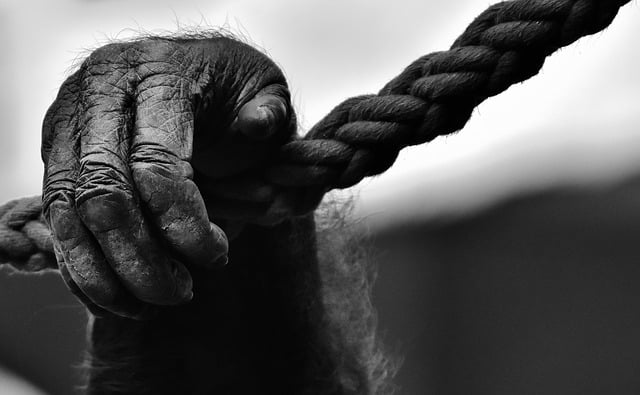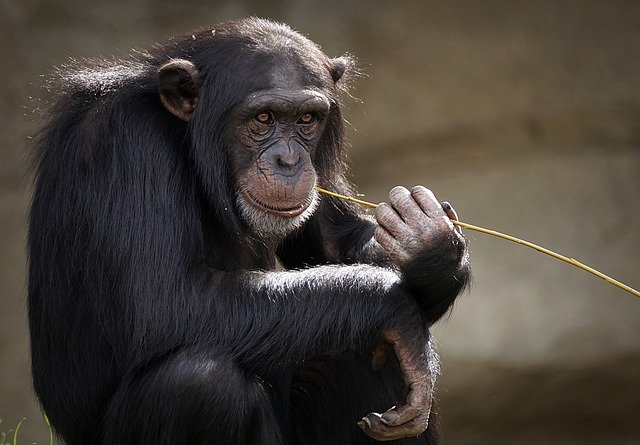
"Anthropopythecus" was a term proposed to name the common chimpanzee
The anthropopithecus is a hominid that lived in the Quaternary period , more precisely in the Pleistocene . This means that its existence is between two million and 10,000 years ago.
A monkey-man
The term is formed with the prefix anthropo- (which refers to "man" ) and an ending from the Greek word píthēkos (translatable as "monkey" ). Etymology , therefore, tells us that an anthropopithecus is an ape-man .
The person who coined the notion was the French naturalist and zoologist Henri Marie Ducrotay de Blainville ( 1777 – 1850 ). In 1839 , this specialist proposed the name to refer to the taxonomic group of the animal that we know today as chimpanzee .
John Bland-Sutton , a naturalist and surgeon from Great Britain, relied on the genus coined by De Blainville to propose the name Anthropopithecus troglodytes in 1883 as a new name for the common chimpanzee. But already in 1816, the genus Pan had begun to be used to talk about these animals, according to the work of the naturalist Lorenz Oken , from Germany. As in this area, the order of appearance of the nomenclatures also indicates their degree of importance, so that Pan predominated, leaving the proposal by Bland-Sutton without any validity.
Over time, anthropopithecus began to be used to name the supposed missing link in evolution between the monkey and the human being . Later the word was associated with fossil remains found in Java in 1891 , attributed then to the species Anthopopithecus erectus and today to Homo erectus erectus .
Java Man
Currently, although it is no longer used scientifically, the Java man is called anthropopithecus. Like all hominids, the anthropopithecus had an anthropomorphic appearance and lacked a tail. It is, on the other hand, a primate : it was plantigrade, had five fingers with nails on each extremity and, on the thoracic limbs, the thumb was opposable to the rest of the fingers.
It is estimated that the cranial capacity of the anthropopithecus was higher than that of the gorilla and lower than that of Homo sapiens . Expert analyzes indicate that the anthropopithecus walked upright, was a hunter and lived in caves.
Outside the scientific field
As we mentioned above, the term anthropopithecus is no longer used in the scientific field, since it has now become obsolete. But this does not mean that no one uses it, and in fact in popular culture it has managed to find and maintain its place, especially in Belgium and France, among other countries. An example is found in the story Gil Braltar , by Jules Verne , where it is used to describe a character who resembles an ape, General McKackmale.
In the passage where Verne talks about his physical appearance , he uses expressions such as "strong beard", "grotesque countenance" and "a notable ugliness", among others that clearly show us that his supposed resemblance to an ape was something very negative and unpleasant for him. the author. Another French writer, Léon Groc , talks about the anthropopithecus in his novel The City of Darkness , a work of science fiction in which these characters live in a fairly rudimentary civilization.

In popular culture we find this term to talk about apes and their simian appearance.
The term is also found as an insult in the comic series The Adventures of Tintin , where it is used by the character called Captain Haddock , who tends to get angry very easily and utter derogatory terms as part of his attacks of anger. In this case, the author was Hergé , who was born in Belgium at the beginning of the 20th century.
Finally, we can mention Brigitte Fontaine , an actress, singer and author of French origin, who in the lyrics of her song titled Pipeau talks about anthropopithecuses.
